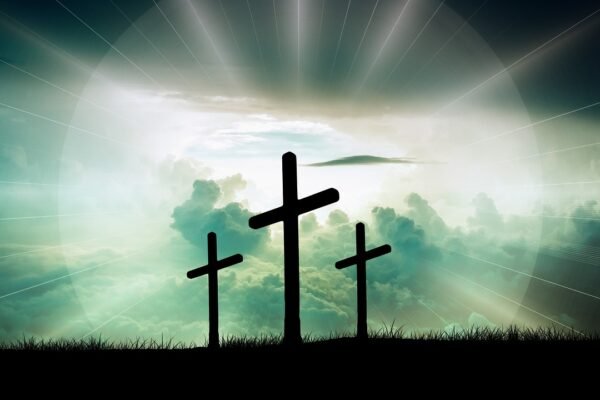Building Beautiful Churches for Jesus: Why the post-COVID church must redefine itself and its mission.
Once upon a time a local church decided to build larger facilities to accommodate its rapid growth. It was a wealthy church, so it spent lavishly in making sure the new campus was the finest in town.
Building program complete, an auspicious dedication event was convened. The keynote speaker was a former senior pastor who had national name recognition, which drew community and media attention.
But as he arose to deliver his message, the appearance of a giant hand high above the stage—as in Belshazzar’s feast in Daniel—brought everything to a standstill! In large bold letters, as if for all the world to see, it wrote, NOW, BUILD ME A CHURCH!
Try to imagine the private thoughts of some of the elders and deacons at that moment. Build you a church? We just did, to the tune of millions of dollars!
The Building is not the Church
This underscores the moral of the story: the building is not the church.
For too long we’ve unwittingly equated “church” with our places of worship, evidenced by what we say as we head to our buildings—“I’m going to church.”
But COVID-19 is forcing Christians to recognize that the church is separate from its facilities and that the church can, in fact, exist without them!
Notwithstanding, church buildings do serve important functions, among them being the facilitation of the gathered community of believers, which cannot be fully substituted by virtual meetings.
We therefore celebrate those churches blessed with beautiful buildings, often a reflection of sacrificial giving and much labor of love.
People Building
Yet, at the end of the day, we must reckon with the fact that the church and its buildings aren’t one and the same. After we’ve built our finest facilities, we must give ourselves to the important work of people building.
[bctt tweet=”We must give ourselves to the important work of people building. – Whaid Rose” via=”no”]
This highlights an overlooked principle in the book of Nehemiah. Because “the people had a mind to work” (2:18) the building project was completed in just 52 days (6:15)! Yet, the book continues for seven more chapters.
The additional chapters record Nehemiah’s investment of himself in the lives of God’s people, addressing issues of faith, morality, justice, and much more. In short, Nehemiah’s story is as much about building people as it was about rebuilding walls.
Pour into Others
It is also noteworthy that in his three-plus years of public ministry Jesus never started an organization nor built a building. He simply poured Himself into a small band of disciples who later became the catalyst of a movement which remains the largest religion in the world 2000 years later!
For these first century believers, “church” was not defined by buildings, but by lives radically transformed and committed to seeing that same transformation in others through the power of the gospel.
Therefore, as the pandemic thrusts unprecedented change and disruption upon us, including the way we worship, this is a good time for the church to redefine itself and its mission to a world in desperate need of healing and hope.
[bctt tweet=”This is a good time for the church to redefine itself and its mission to a world in desperate need of healing and hope. – Whaid Rose” via=”no”]
Christ in the World
So for starters, the church must see itself as the visible presence of Christ in the world. Jesus no longer lives on earth in bodily form, except through the church. This is one of the reasons the church is such a necessary part of the economy of grace: the invisible Christ needs a visible body!
As Christ’s Body on earth, the church is to reflect Jesus’ heart for our broken world. His mission to “preach the gospel to the poor, heal the brokenhearted, proclaim liberty to the captives, and set at liberty those who are oppressed” (Luke 4:18-19) must become ours.
Agents of Reconciliation
We are to raise up churches committed to rebuilding “waste places” and being “repairers of the breach” (Isaiah 58:12); churches that will dare to “do justice and love mercy” (Micah 6:8); churches which are agents of reconciliation (2 Corinthians 5:16-21).
In summary, “We’re called to be agents of God’s redemptive work among broken lives in a fallen world.”
This comes from Gary Haugen, founder of the International Justice Mission, a global organization which ventures into some of the darkest places on the planet to rescue and protect the poor and defenseless from violence and exploitation.
As a result, Haugen understands the brokenness of our world better than most, which informs his view of the church’s mission. Reflecting on how the pandemic has magnified the world’s brokenness, Haugen further asserts that “The people of God are most what they’re meant to be when the world is least what it’s meant to be.”
This is the Church’s Finest Hour!
That being true, this is the church’s finest hour! Artios’ vision of “equipping leaders for a vibrant 21st century church” has never been more critical. And the meaning of the word “equip” in the original Greek must be fully grasped.
“Katartizo,” a combination of “kata” and “artios” which means to heal or restore a broken bone, speaks to the kind of ministry so desperately needed in our fallen world.
This old Chinese proverb speaks to this principle: “When planning for a year, plant corn. When planning for a decade, plant trees. When planning for a lifetime, train and cultivate people.”
Paul likely had the same thing in mind when he penned Ephesians 4, commonly called the equipping model of discipleship.
So let us heed the handwriting on the wall by building something beautiful for Jesus. Truth is, Jesus is building His church; we get to be partners with Him. In that capacity, let us rise and build churches that are agents of transformation, all for love’s sake, at such a time as this.
- Find out more about The Artios Center for Vibrant Leadership here.
- Interested in learning more about Artios Christian College? Click here.
- View the upcoming Artios class schedule here.
- Have questions about how you fit into Christian leadership? Check out these resources:








